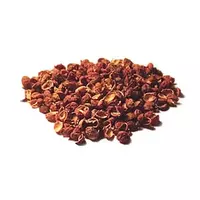Chinese pepper in granules

It is unlikely that at least one lover of sharp will be able to give up pepper. It has a huge number of varieties. Chinese pepper has been especially popular lately. Despite its name, it is not a native of the Celestial Empire. Like many of its analogues, pepper came to Europe from the New World, where it grows. It is also called Japanese, Sichuan and "Habanero" ("yellow Chilean flashlight"). In its shape, its fruits really resemble Chinese sky lanterns.
The error in the official species name is explained by the discovery of a Dutch naturalist who described the species back in 176
6. He was sincerely convinced that the pepper came from China. However, we said earlier that it originates in South America. Currently, the vegetable grows almost all over the world. The main thing for him is favorable conditions. Chinese pepper in granules is especially common.
Habanero plants can differ significantly from each other in color, color, foliage shape, shrub size, etc. It was for this reason that it was decided to harvest Chinese pepper in granules, whose diameter is a matter of millimeters. Outwardly, it completely resembles polka dots.
Eating Chinese pepper
Despite its origin, the product is actively used in Chinese cuisine. Red-brick kernels with half-open flaps are added to fish, pork and poultry dishes. In addition, Chinese pepper in granules is used even in confectionery environments. Some advise replacing it with white pepper, but such an exchange is unequal, since the latter has a thin and strong smell, and the burning properties cause slight numbness in the mouth and tingling feelings.
It is not uncommon for Chinese peppers to be combined with badyan, onion and fresh ginger root. In Europe, they are usually flavored with dishes made of crustaceans and shellfish, as well as sauces for fish salads. The areas of application of pepper are diverse and largely depend on the individual preferences and abilities of the chef.
Often, Chinese pepper "habanero" is called "chili, " confusing species due to their strongest burning. They may taste similar, but the original shape gives the "yellow Chilean flashlight" its originality and originality.
Chinese pepper in kCal pellets
Energy value of Chinese pepper in granules (Ratio of proteins, fats, carbohydrates - ju):
Proteins: g (~ 0 kCal)
Fats: g (~ 0 kCal)
Carbohydrates: g (~ 0 kCal)
 Español
Español Français
Français Português
Português Русский
Русский 简体中文
简体中文 繁體中文
繁體中文 日本語
日本語 한국어
한국어 العربية
العربية Türkçe
Türkçe Қазақ
Қазақ Deutsch
Deutsch Italiano
Italiano Українська
Українська
